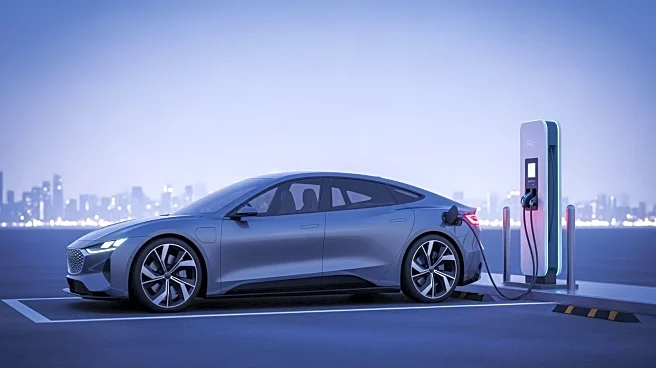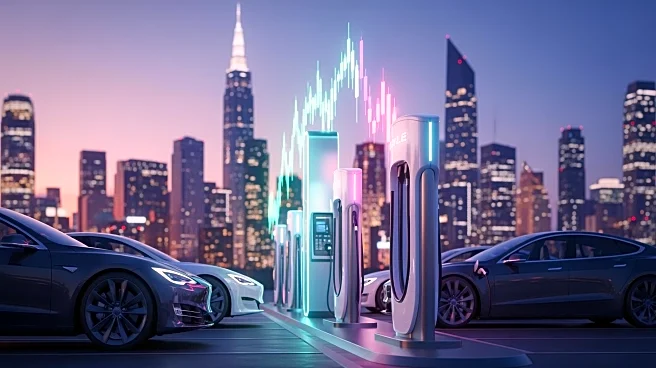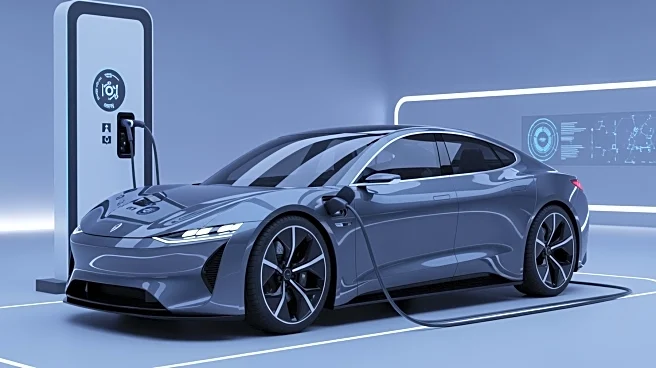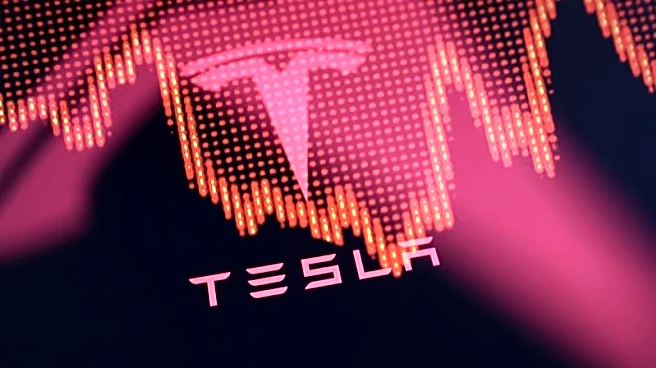What's Happening?
Tesla has reported record vehicle deliveries in the third quarter of 2025, with 497,099 units sold, marking a 7.4% increase year-over-year. This surge was largely driven by a rush of U.S. buyers seeking
to capitalize on expiring electric vehicle tax credits. Despite the impressive sales figures, Tesla's revenue reached an all-time high of $28.1 billion, surpassing Wall Street's forecast of $26.3 billion. However, the company's aggressive discounting strategy has led to a profit miss, with adjusted earnings per share falling short of expectations at $0.50 compared to the consensus estimate of $0.54. Operating income also saw a significant decline of approximately 40% year-over-year, reflecting squeezed automotive margins.
Why It's Important?
The record sales highlight Tesla's strong market position and the effectiveness of its pricing strategy in boosting volume. However, the profit miss and declining operating income raise concerns about the sustainability of Tesla's growth without the support of tax credits. The expiration of these credits could lead to a slowdown in demand, posing challenges for Tesla as it faces increasing competition from other electric vehicle manufacturers, particularly from China. Analysts are divided on Tesla's future prospects, with some maintaining bullish price targets based on the company's potential in AI-driven autonomy, while others caution against overvaluation given the current market conditions.
What's Next?
Investors will be closely monitoring Tesla's strategic moves, including the development of robotaxi services and the introduction of new 'Standard Range' models. The company's ability to maintain growth without tax credits and navigate competitive pressures will be critical. Additionally, governance issues, such as CEO Elon Musk's compensation package, may influence shareholder sentiment. The market will also watch for Tesla's progress in AI and robotics, which are seen as key drivers of future growth.
Beyond the Headlines
Tesla's transition into an AI and robotics-focused company could redefine its market valuation, as investors increasingly view it as a tech leader rather than just an automotive manufacturer. This shift may have long-term implications for the company's strategic direction and its ability to innovate in areas like autonomous driving and robotics.













